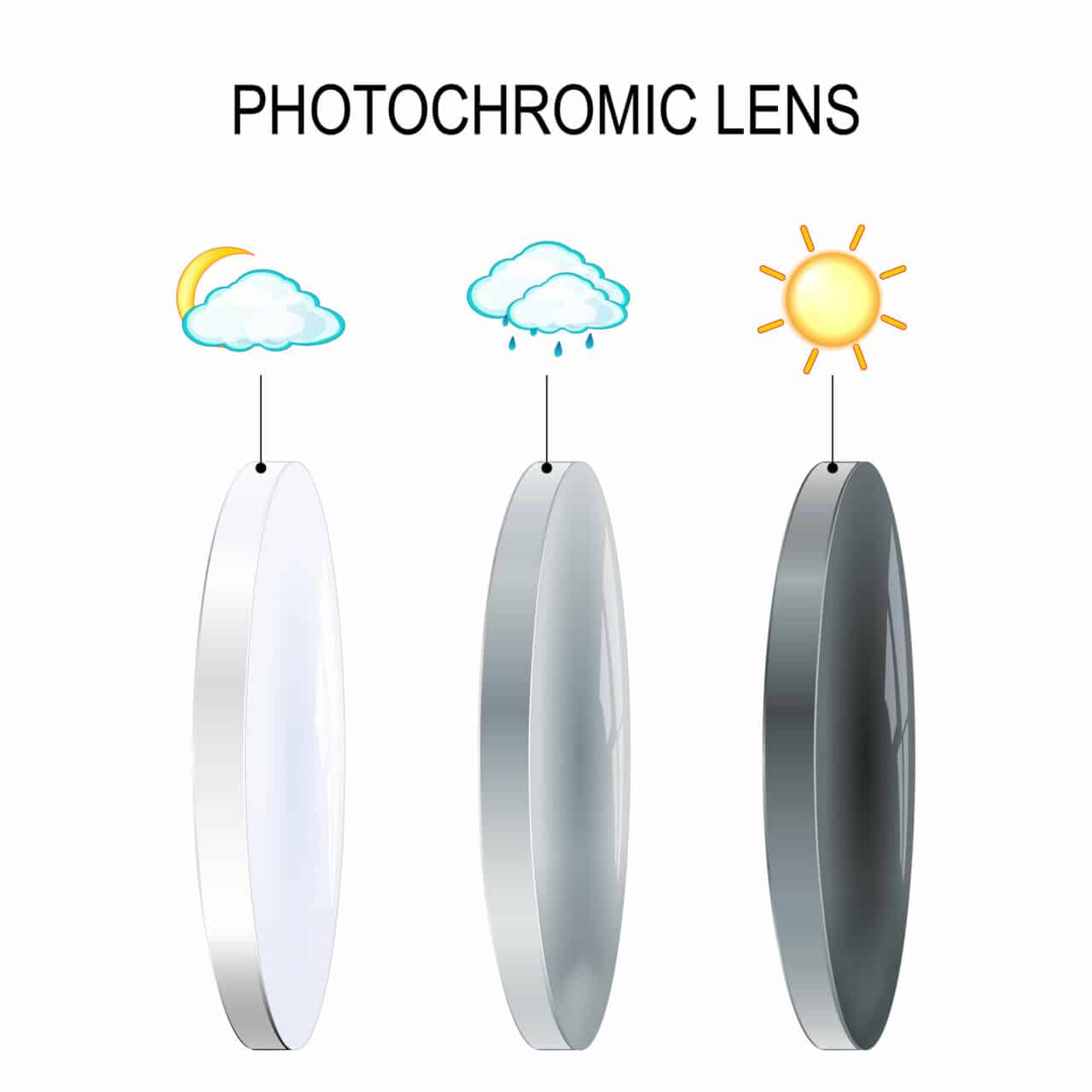I’ve spent a lot of time writing about lenses on YourPhotoAdvisor. One lens type that’s more common than the camera lenses I’ve written about is the transition lens, or photochromic lens. That’s right, prepare for some spectacular sentences on spectacles! Alliteration aside, let’s jump into it.
How do you handle these transition lenses as a photographer when photographing outside? If you’re wearing glasses with transition lenses, you may wish to remove them in order to get a better idea of what your shot looks like, depending on your camera’s diopter adjustment. If you’re photographing subjects who wear transition lenses, you may wish to offer substitute frames without lenses so that their eyes are visible. It’s important to communicate in this regard. Ultimately, wearing or not wearing glasses with transition lenses on both sides is a personal choice.
There are really two issues here that represent each side of the camera – you wearing transition lenses as the photographer and working with subjects who wear transition lenses. Depending on how you handle each side will depend on the outcome you are looking for.
Table of Contents
What Is a Photochromic Lens?
Transition lenses, or photochromic lenses, are the lenses that darken on exposure to sunlight and lighten in softer light or the dark. This process helps protect the eyes from ultraviolet (UV) radiation.
There are two types of transitions lenses. One is adaptive to UV and transitions within minutes and the other is darker by default but takes longer to transition. Since car windows are UV protected glass, normal transition lenses don’t transition in cars. Sometimes people use both for this reason.
Other names for these types of lenses include:
- Light-adaptive lenses
- Light intelligent lenses
- Variable tint lenses
- Auto-tinting lenses

The image above simulates the darkening process with the lenses due to UV exposure. One thing worth mentioning is the transition process can not only start, but also become darker than normal in cloudy and some rainy conditions than clear, sunny conditions.
This is due to UV rays being able to penetrate clouds and can potentially be more reflective. This is why you are advised to still apply sunscreen when outdoors during cloudy conditions. The temperature may not be as hot, but you are still exposed to UV rays.
How to Handle Subjects Who Wear Transition Lenses
I wear glasses with transition lenses and they get dark after going outside within 2 to 5 minutes, depending on where I stand. If I return indoors, it takes about 2 minutes to return from dark to clear without UV exposure.
These lenses transition quickly. Therefore, setting up the shot and trying to get everyone settled before the lenses go dark (even if it’s just one person) would be a race to frustration. So that’s out of the question.
Ideally, you would communicate this issue before an outside photoshoot, but if you don’t, here are 3 major options below.
Ask Them to Leave Their Glasses Off Until Photo Time
Asking the subject(s) to remove their glasses would be the easiest first option to do. It could be for the entire photoshoot or have the subject(s) wear their glasses in the interim and put them away during the actual shots.
They can keep their glasses in a case or black pouch until a shot is needed. Then they can put their glasses back on. Once a few shots are taken, the glasses can go back into the case or pouch. The case or pouch can be stored in the back of their waistband or somewhere else out of frame.
Don’t be surprised if you get a little pushback on this. People are used to their glasses, and while it’s bright outside, they would rather keep their glasses on. Quite frankly, if a photographer asked me to remove my glasses I wouldn’t comply so I completely understand.
Partner with an Optometrist
Alternatively, if you know an optometrist, whether they are yours or one who is just in the area, you can borrow frames with clear, non-prescription lenses. This does require some planning to line a few up before a shoot. If you are pressed for time, you can position this as an opportunity for free advertising for them.
This go-to optometrist could provide frames with non-prescription lenses or frames with no lenses. Either way, you could have a great selection of frames to use in your photos for those people who think they look better with glasses than without them.
You can also order trial pairs of glasses from mail order glasses sites. These trials loan 3 to 5 frames to try for a couple weeks before sending them back. This method requires credit card info but no purchase is necessary to get the trials. This would work in a pinch but would not be sustainable in the long term.
Set an Alternative Shoot Time
You can also propose to shoot at sunrise or sunset, when there isn’t enough ambient light to trigger the transitional lenses. As an added bonus, you can use the pretty sky as a background, even using strobe lights for key and fill.
A strobe flash would not trigger the transitional lenses to get darker, nor should hot lights if you need to go that route.
How to Handle Transition Lenses as the Photographer
I love wearing my sunglasses and transitional lenses outside, even though they are basically putting an ND filter on your eyes (non-color tint). When it’s time to shoot in the day time though, the scenery appears darker than it actually is.
There is a difference when looking in the view finder with transitional lenses versus regular lenses. Unless you want to keep your glasses on, you basically have 2 options as noted below.
Use a Second Set of Glasses Without Transition Lenses
Unless you are wearing your first pair of glasses, you will most likely have a backup pair with non-transitional lenses. I’ve kept my original glasses as a backup pair in case I lose my current pair. The prescription is close enough to not be a problem.
If you are in a similar situation, you can simply switch glasses when you are ready to shoot. If you have a matching clip on, this process is that much easier.
Remove Your Glasses Before the Shot
I usually don’t wear my glasses when I’m taking photos anyway. It’s just more comfortable to shoot without them. Most people would probably fall into this category, especially if you have your view finder’s diopter adjusted (focus) to where you need it. Then all you need to do is put your glasses back on to double check your camera’s LCD screen.
If You Have Polarized Lenses
If you have polarized lenses you can use your glasses to essentially become a preview of your upcoming shot if you intend on using filters. The polarizing ability of the glasses can help you visualize future shots that may benefit from a polarized filter, especially if you plan to take photos of the sky.
Final Thoughts
Ultimately, you decide on how you want to see your shots and how you use your view finder to capture these shots. Furthermore, your clients will decide on whether they want they eyes visible or not. Keeping their glasses with transition lenses on is a personal choice that must be respected.
I really like Savannah’s take on this at Savannah Smith Photography with respect to weddings. She has a more human approach to transition lenses than other photographers I’ve seen that just respond with a bad attitude. I encourage you to check it out as her post is a masterclass on working with clients.
Most photographers get irritated with transition lenses since people get used to wearing their glasses all the time. Sure the sunglasses come off, but not the glasses with transition lenses. They often decline and now you have photos with select people with darkened lenses so you can’t see their eyes.
Personally, this doesn’t bother me on the photographer side or the client side. If this bothers you, don’t get frustrated. Learn to communicate with your clients to find the best course of action to take!

